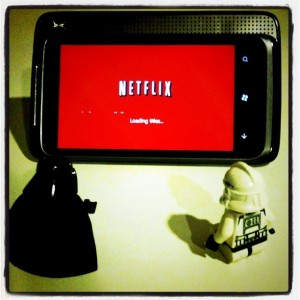 What is television? This morning Nielson is reporting (h/t to @prgeek) that for the first time in 20 years the number of homes with television sets has dropped. From 98.9 to 96.7. That may not sound like a lot but that’s actually a really big number. Moreover I think the number is actually greater than that because the people who choose to live with out a TV are harder to reach with traditional research (usually phone calls to listed land lines).
What is television? This morning Nielson is reporting (h/t to @prgeek) that for the first time in 20 years the number of homes with television sets has dropped. From 98.9 to 96.7. That may not sound like a lot but that’s actually a really big number. Moreover I think the number is actually greater than that because the people who choose to live with out a TV are harder to reach with traditional research (usually phone calls to listed land lines).
I would also point out that just because you own a TV doesn’t mean you watch first run, broadcast television. I own a “TV” but I don’t watch “TV.” I play XBOX, and watch content produced by TV studios on Netflix, Hulu and DVD’s. I don’t watch network TV programming.
Nielson spends most of their effort spinning the drop in television sets to the recession and the bad economy, which may be partly true. But the real insights is buried at the bottom of the article.
Then there are the tech-savvy Americans who once lived in a household with a television, but no longer do. These are either cord-cutters — a term that refers to people who stop paying for cable television — or people who never signed on for cable. Ms. McDonough suggested that these were younger Americans who were moving into new residences and deciding not to buy a TV for themselves, especially if they “don’t have the financial means to get one immediately.”
Nielsen has not yet assessed what proportion of the decline can be attributed to this behavior. But the decline in the percentage of homes with sets is sure to kick off another round of speculation about cord-cutting.
Sensitive to its clients’ concerns, Nielsen explains the trend this way in the report: “While Nielsen data demonstrates that consumers are viewing more video content across all platforms — rather than replacing one medium with another — a small subset of younger, urban consumers seem to be going without paid TV subscriptions for the time being. The long-term effects of this are still unclear, as it is undetermined if this is also an economic issue that will see these individuals entering the TV marketplace once they have the means, or the beginning of a larger shift to online viewing.”
Nielson is even thinking about changing how they define and measure what a television set it. They want to capture those “young tech savvy” video viewers. But that doesn’t really help them, it will only inflate their numbers and cover up the fact that people aren’t watching nearly as much network television.
The tide has turned and there’s no going back. Instead of trying to inflate their numbers they should focus on a reinventing their business model.
Similar Posts:
- Blogs, Ad Networks and the future of the Associated Press
- Racial Marketing
- How does Journalism Stay Relevant?
# of Comments 5
# of Comments 1
# of Comments 4